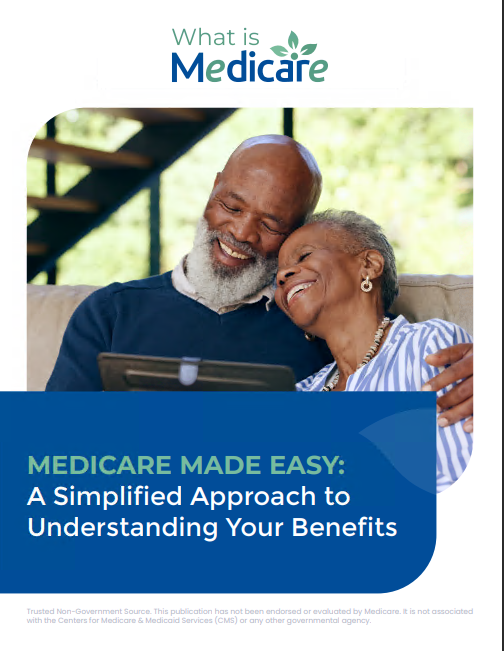Key Takeaways:
- Medicare’s Special Enrollment Periods (SEPs) are essential for accessing coverage outside standard enrollment windows.
- Qualifying life events like moving or losing coverage may trigger an SEP, allowing timely changes to your Medicare plan.
Understanding Medicare Special Enrollment Periods (SEPs)
For most people, the idea of signing up for Medicare is tied to specific times of the year. But life doesn’t always adhere to our schedules, and certain events can complicate access to healthcare. Special Enrollment Periods (SEPs) were designed to help, offering a way to make changes to your Medicare coverage outside the usual enrollment windows. Here, we’ll explore what SEPs are, how they work, and what life changes might qualify you for an SEP.
What Is a Special Enrollment Period?
A Special Enrollment Period is a window of time during which you can make changes to your Medicare plan outside of the typical enrollment periods. While most people know about the Initial Enrollment Period (IEP) and the Annual Enrollment Period (AEP), SEPs provide additional opportunities to sign up or change plans. These enrollment periods are activated by specific life events that can impact your healthcare needs.
Whether you’re looking at Original Medicare, Medicare Advantage, or Medicare Part D, understanding SEPs can give you flexibility and ensure you’re covered when unexpected changes arise.
When Regular Enrollment Periods Don’t Work
The Limitations of Standard Medicare Enrollment Windows
For a quick recap, here’s a rundown of the typical Medicare enrollment periods:
- Initial Enrollment Period (IEP): A 7-month period around your 65th birthday, from 3 months before to 3 months after.
- Annual Enrollment Period (AEP): From October 15 to December 7, allowing beneficiaries to change plans.
- Medicare Advantage Open Enrollment Period (MA OEP): January 1 to March 31, letting current Medicare Advantage members make one plan change.
But these fixed periods can’t cover every situation. Sometimes, circumstances change, and you may find yourself needing different coverage or facing a gap if you’re locked out until the next open period. That’s where SEPs come in.
Life Events That Qualify You for a Special Enrollment Period
Certain situations in life may qualify you for an SEP. Let’s break down some of the most common life events that might make you eligible.
1. Moving to a New Area
Moving is one of the most common reasons for an SEP. If you move to a new location where your current Medicare Advantage or Part D prescription drug plan isn’t available, you may qualify for an SEP to choose a new plan in your new area. Here’s what you need to know:
- Eligibility Timeline: You have two months after your move to make changes.
- Reason for SEP: Medicare plans are often tailored to specific geographic areas, so if you’re moving, you may need a plan that suits your new location’s network and services.
2. Losing Coverage Through Work
If you or your spouse lose employer-based health insurance, you’ll likely be eligible for an SEP. This is especially important if you were delaying Medicare enrollment due to having coverage through an employer.
- Eligibility Timeline: You have up to 8 months after losing employer coverage to enroll in Medicare Part B without facing late penalties.
- Options During SEP: You can enroll in Medicare Part B and add Medicare Advantage or Part D to ensure full coverage.
3. Returning to the U.S. After Living Abroad
Returning to the U.S. after living abroad can trigger an SEP, allowing you to sign up for Medicare without waiting for a traditional enrollment period.
- Eligibility Timeline: The SEP begins the month you move back and continues for two more months.
- Coverage Flexibility: This period allows you to enroll in Medicare Part B or choose a Medicare Advantage or Part D plan to meet your needs upon returning to the States.
4. Changes in Medicaid or Extra Help Status
If you lose Medicaid or qualify for Extra Help with Medicare Part D, or if your eligibility changes, you may qualify for an SEP to switch plans.
- Eligibility Timeline: You typically have two months from the time your Medicaid or Extra Help status changes.
- Why This Matters: Those relying on Medicaid or Extra Help often face fluctuating financial situations, so having access to an SEP can be critical to maintaining affordable healthcare.
5. Changes to Institutional Living Arrangements
Entering or leaving a nursing home, rehabilitation facility, or another institutional care facility can also qualify you for an SEP.
- Eligibility Timeline: You have a window to enroll in, leave, or switch your Medicare Advantage or Part D plan when moving into or out of institutional care.
- Enrollment Flexibility: This SEP ensures that you can adjust your coverage to match your new care needs, regardless of the time of year.
How to Use Your Special Enrollment Period
Once you qualify for an SEP, you’ll want to act quickly to avoid coverage gaps or unnecessary expenses. Each SEP has its own time limit, so check your specific SEP window to avoid missing your chance to make changes. Follow these steps to maximize your SEP:
-
Contact Medicare or a Plan Provider: As soon as you experience a qualifying event, contact Medicare or the provider of your current plan. They can confirm your eligibility and walk you through next steps.
-
Review Plan Options: Take the time to understand your options within Medicare, whether that means moving to a Medicare Advantage plan, adding Part D coverage, or enrolling in Part B if you hadn’t before.
-
Apply Within the SEP Window: Ensure that your new plan is in place before your SEP ends to avoid any coverage interruptions.
Avoiding Penalties with SEP Enrollment
One of the biggest advantages of enrolling through an SEP is avoiding penalties, which can otherwise be significant. Here are some common penalties and how an SEP can help you avoid them:
Medicare Part B Late Enrollment Penalty
If you don’t sign up for Medicare Part B when you’re first eligible, you may face a 10% increase in your monthly premium for every 12 months you were eligible but didn’t enroll. An SEP can help you avoid this penalty if you’ve delayed enrollment due to employer coverage or other qualifying situations.
Medicare Part D Late Enrollment Penalty
Delaying Part D enrollment can also lead to penalties. For each month you were without Part D or creditable prescription drug coverage, you may owe an extra 1% on your premium. SEPs related to life events, like moving or losing coverage, offer a way to enroll in Part D without incurring this penalty.
Making Sense of the SEP Timelines
Since each SEP has its own timeline, it’s essential to be clear on the specific deadline for your situation. Here’s a quick overview:
- Moving: Two months after your move.
- Loss of Employer Coverage: Eight months after losing coverage to enroll in Part B without penalties.
- Returning from Abroad: Two months from the month you return.
- Medicaid/Extra Help Changes: Two months from the change in status.
- Institutional Living Changes: Two months after moving into or out of care.
Understanding these SEP timelines is key to staying covered without gaps or penalties.
Do You Qualify for Multiple SEPs?
It’s possible to qualify for multiple SEPs if you experience several life events around the same time. However, each SEP generally applies to a specific enrollment or change. Medicare typically requires that you select one SEP per change, so prioritize the event that aligns best with your health needs and timing.
Tips for Managing Medicare Coverage Changes
Navigating Medicare coverage changes can feel overwhelming, especially if you’re unfamiliar with the different enrollment periods. Here are a few tips:
-
Stay Organized: Keep a record of major life events that may qualify you for an SEP, such as moving or job changes.
-
Mark Key Dates: Once you qualify for an SEP, mark your deadline on a calendar so you won’t miss it.
-
Research Before the Event: Look into your Medicare options before your life change occurs. For example, if you know you’ll be moving, check for plans in your new area ahead of time.
-
Use Medicare Resources: Medicare has resources to help you understand SEPs and enrollment options, including their official website and Medicare customer service.
-
Consult a Medicare Expert: If you find SEPs or other enrollment rules confusing, consider consulting a Medicare advisor. They can clarify options and ensure you meet all requirements without penalties.
Ready for a Change? Medicare SEPs Keep You Covered
Life is unpredictable, but Medicare’s Special Enrollment Periods ensure you have flexibility when the unexpected happens. Whether you’re relocating, losing other coverage, or adjusting to new financial circumstances, SEPs help bridge coverage gaps and avoid penalties. By knowing which events trigger SEPs and planning your response, you can navigate life’s twists and turns while staying secure in your Medicare coverage.








